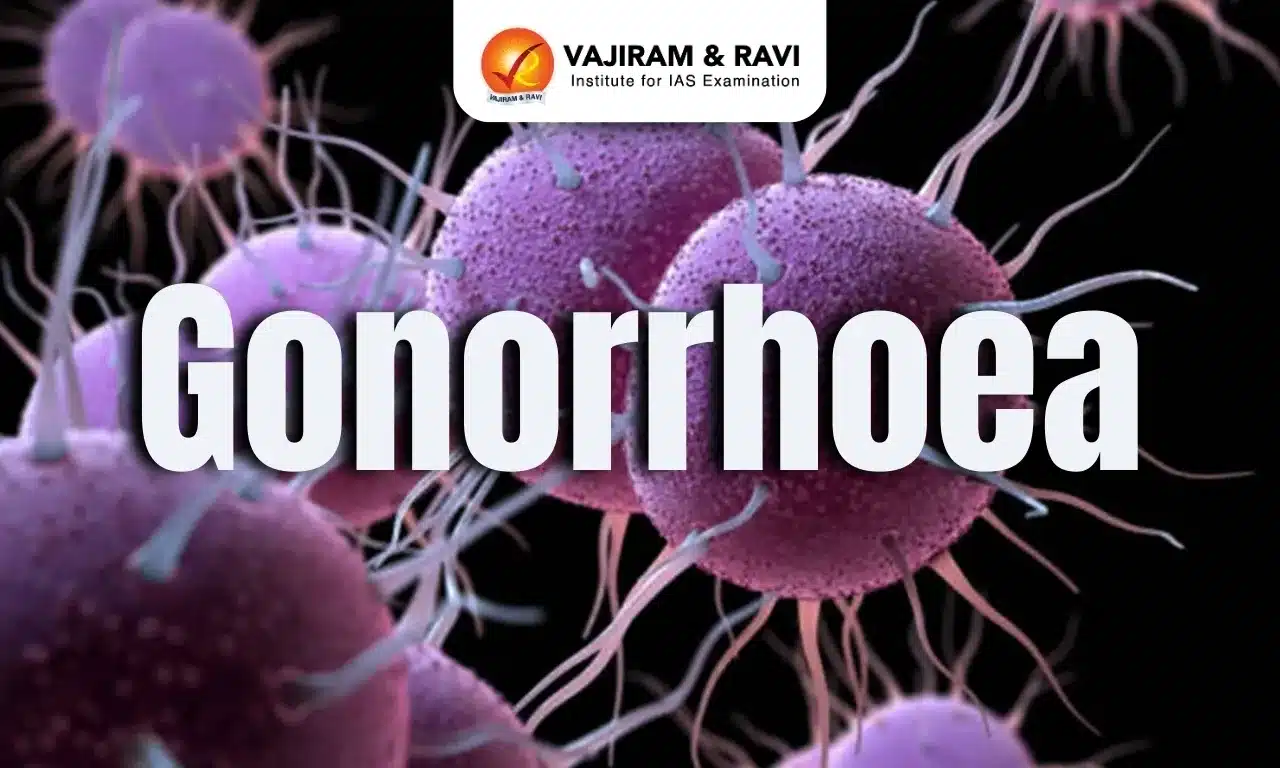About Neo:
- Discovery of ‘Neo’: It was reported by researchers led by Stephen Tang and Samuel Sternberg in a 2023 preprint paper on bio Rxiv while working on Klebsiella pneumoniae.
- Mechanism: Bacteria defend themselves from viral infection (against bacteriophages) using diverse immune systems, many of which sense and target foreign nucleic acids. Defense-associated reverse transcriptase (DRT) systems are one of them.
- In the DRT-2 system, the bacteria undergo de novo gene synthesis via rolling-circle reverse transcription (RT) of a non-coding RNA (ncRNA).
- In uninfected bacterial cells, the ncRNA and RT enzyme lead to the synthesis of a repetitive single-stranded cDNA.
- The presence of phage triggers the second-strand cDNA synthesis, leading to the production of long double-stranded DNA.
- This double-strand cDNA generates messenger RNAs that encode a stop codon-less, never-ending open-reading frame (neo) whose translation (neo protein) causes potent growth arrest (cell dormancy) of bacteria. It protects the larger bacterial population from the spread of phage.
- Significance in Biotechnology and Medicine:
- It represents a potential biotechnological tool for controlling viral infections.
- Retroelements in the human genome and bacterial reverse transcriptases have a common evolutionary history as well as share functional mechanisms.
- Bacterial reverse transcriptases, believed to be the precursors of their eukaryotic counterparts, exhibit analogous mechanisms.
- Reverse transcriptase:
- The ability of cells to create DNA copies from RNA is called reverse transcription. It is performed by the enzyme called reverse transcriptase.
- Reverse transcriptase, discovered by Howard Temin and David Baltimore in 1970, has revolutionised research methods in molecular biology and is crucial in studying and managing RNA viruses like HIV.
- Reverse transcriptase is used in molecular biology to clone genes, perform PCR, and analyse genomes.
It is also used in diagnostics to detect and quantify viral loads, such as in the case of SARS-2. It also has helped track the virus’s spread, paving the way for surveillance, better public healthcare, and vaccine development.
Q1. What is a DNA?
DNA (Deoxyribonucleic Acid) is a molecule that carries genetic information, responsible for transmitting hereditary traits from parents to offspring. It is a double helix structure composed of nucleotides with four nitrogenous bases: adenine, cytosine, guanine, and thymine.
Source: The bacteria that write new genes to cope with infections
Last updated on December, 2025
→ Check out the latest UPSC Syllabus 2026 here.
→ Join Vajiram & Ravi’s Interview Guidance Programme for expert help to crack your final UPSC stage.
→ UPSC Mains Result 2025 is now out.
→ UPSC Notification 2026 is scheduled to be released on January 14, 2026.
→ UPSC Calendar 2026 is released on 15th May, 2025.
→ The UPSC Vacancy 2025 were released 1129, out of which 979 were for UPSC CSE and remaining 150 are for UPSC IFoS.
→ UPSC Prelims 2026 will be conducted on 24th May, 2026 & UPSC Mains 2026 will be conducted on 21st August 2026.
→ The UPSC Selection Process is of 3 stages-Prelims, Mains and Interview.
→ UPSC Result 2024 is released with latest UPSC Marksheet 2024. Check Now!
→ UPSC Prelims Result 2025 is out now for the CSE held on 25 May 2025.
→ UPSC Toppers List 2024 is released now. Shakti Dubey is UPSC AIR 1 2024 Topper.
→ UPSC Prelims Question Paper 2025 and Unofficial Prelims Answer Key 2025 are available now.
→ UPSC Mains Question Paper 2025 is out for Essay, GS 1, 2, 3 & GS 4.
→ UPSC Mains Indian Language Question Paper 2025 is now out.
→ UPSC Mains Optional Question Paper 2025 is now out.
→ Also check Best IAS Coaching in Delhi

















